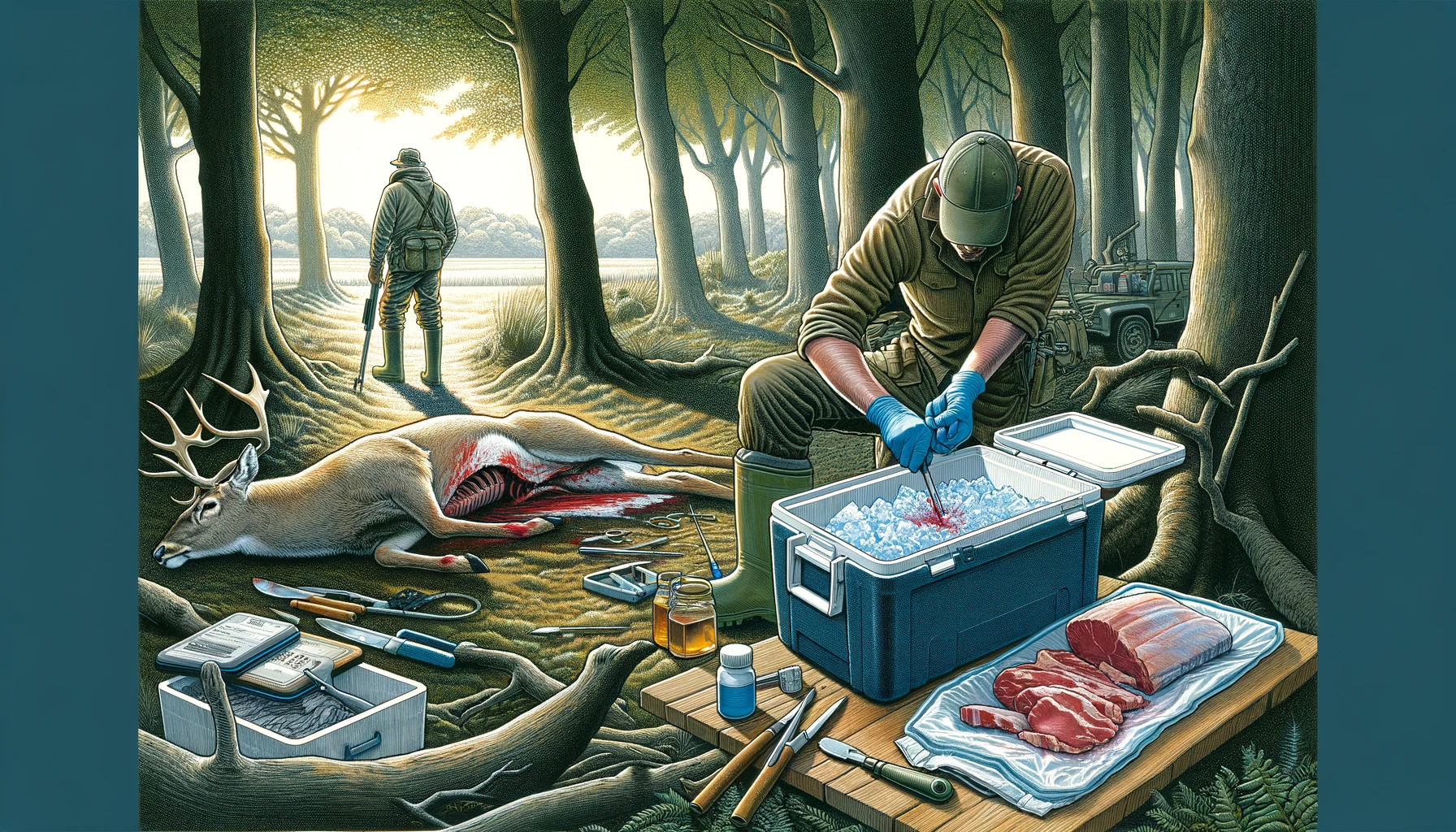
Hunting in warm climates or during early season hunts when temperatures are higher presents unique challenges, especially when it comes to processing a deer. Heat accelerates spoilage, making quick, efficient field dressing and cooling essential to preserving the quality of the meat. Here’s a comprehensive guide to ensure your harvest doesn’t go to waste due to the heat.
Table of Contents
Time is of the essence. Begin field dressing your deer as soon as possible to release body heat and slow bacterial growth. A clean, quick gutting process removes the internal organs that spoil quickly, significantly reducing the carcass temperature.
Use clean, sharp knives to avoid introducing bacteria. Wearing gloves can also help prevent contamination. Make sure any water used for cleaning the cavity is clean and cool.
Hanging the deer in a shaded area allows air to circulate through the cavity, aiding in cooling. If hanging isn’t an option, position the deer to ensure air can move through the chest cavity.
In extreme heat, packing the body cavity with ice can help lower the temperature quickly. Bagged ice is ideal, but ensure there’s a way for melted ice water to drain, preventing the meat from soaking.
For longer transport or extreme conditions, a large cooler can be invaluable. Quartering the deer allows it to fit into coolers where ice or ice packs can maintain a safe temperature.
Removing the hide is another effective way to release heat from the carcass. However, if you’re in a very dusty or insect-ridden area, you might delay skinning until you can do so in a cleaner environment to avoid contaminating the meat.
In hot weather, quartering the deer not only makes it easier to transport but also exposes more surface area to the air, helping it cool faster. This step is particularly beneficial if you need to transport the deer a significant distance before refrigeration.
During transport, keep the deer or quarters as cool as possible. Use a tarp or special game bags to protect it from direct sunlight. Elevate the meat off the bed of a truck or trunk to increase airflow around it.
Once back from the field, refrigerate the meat promptly. If a large game cooler is not available, smaller coolers with ice can suffice for the short term, but be sure to regularly check and replace the ice as it melts.
If temperatures cool down or if you have access to a large, cool storage area, aging the meat can improve its tenderness and flavor. However, in hot weather, this step requires careful temperature control to prevent spoilage.
Process the deer into cuts and package it for freezing as soon as it’s adequately cooled and, if chosen, aged properly. Vacuum sealing and proper labeling (including the date) will help preserve the meat’s quality in the freezer.
Warm weather increases the risk of bacterial growth. Be vigilant about sanitation, and if there’s any doubt about the meat’s safety, err on the side of caution.
Pay attention to signs of spoilage such as off odors, sliminess, or discoloration. When in doubt, discard compromised meat to avoid health risks.
Table of Contents Introduction Gun ownership laws and regulations in the United States vary from…
For hunters and shooting enthusiasts, having a secure and organized way to transport firearms is…
When the hunting season approaches, every serious bowhunter knows: your bow isn’t just gear it’s…
Night vision gear is a critical tool for shooters, hunters, wildlife observers, and tactical operators.…
When you hunt whitetail deer with a bow in thick cover, you’re playing on the…
Hog hunting after dark is one of the most adrenaline-fueled pursuits a shooter can take…
This website uses cookies.